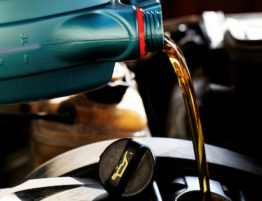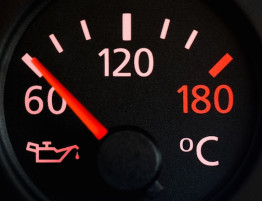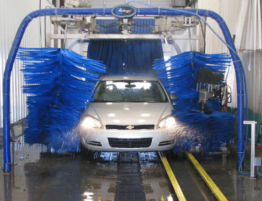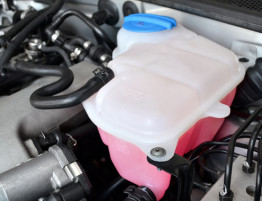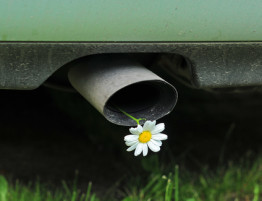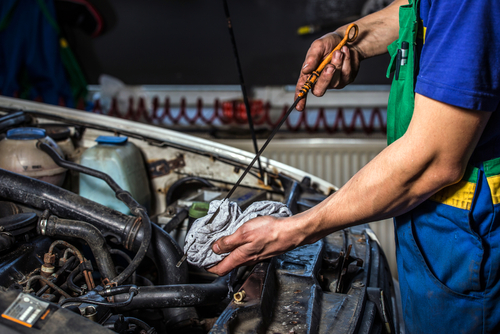
Monitoring and replenishing fluids is one of the simplest and easiest maintenance checks you can do to keep your car, van or truck running smoothly. Each one serves a particular purpose, and needs to be checked and, in most cases, changed throughout the life of your vehicle. If you’ve never looked under the hood, now’s the time to pop it open, get out your owner’s manual, and examine the various fluid reservoirs that keep your car’s engine and brakes operating smoothly and safely.
Checking Power Steering Fluid
If, while driving, you hear creaking or groaning as you turn the steering wheel, chances are it’s time to replenish your power steering fluid. If you don’t refill it, your power steering system will break down; you can’t drive a car without power steering.
Make it a point to check your power steering levels at least once a month. Most manufacturers suggest car owners keep the levels topped off as well. Locate the reservoir under the hood and take a look. Lines on the side of the reservoir indicate the “min” and “max” levels. Refer to your manual or a trusted mechanic to see what type of power steering fluid to buy. Completely flushing the fluid is rarely necessary, but check your owner’s manual to be certain.
Checking Engine Oil
Besides being super easy to do, checking your engine’s oil is one of the most important steps you can take to keep your car or truck running smoothly and safely. Engine oil effectively extends the life of your vehicle by ensuring its gears and bearings run friction-free and do not overheat.
We recommend you check your oil at least once a month, more often if you notice any leaking beneath your car or are driving more mileage than usual. Make sure the engine is off and has had time to cool down before you check the oil. Locate and pull out the oil dipstick under your hood. (Refer to your manual if you don’t know exactly where to look. Do not confuse the oil with the transmission fluid dipstick.) Wipe the dipstick off with a paper towel, then dip it back all the way into the engine and pull it out again.

How often you will need to completely change out your oil depends on the type of vehicle you own, the type of oil you use, and the conditions of the roads you drive. That said, we recommend you get your oil changed annually. Or, on average, every 3,000 to 5,000 miles if you use conventional oils, or every 5,000 to 7,500 miles if you use synthetic oils.
Checking Transmission Fluid
Transmission fluid prevents your vehicle from overheating and keeps its gears operating smoothly. Grinding sounds, sudden movements of your vehicle (either forward or backward) and problems shifting gears are all indications that you may need to flush and change the transmission fluid.
We recommend you check your transmission fluid once a month. Read your owner’s manual to confirm whether or not the transmission fluid needs to be looked at with the engine running. Since it is a part of a closed system, what you are actually checking is the color and consistency of the fluid, not the level. The transmission fluid should be red and not smell burned. If the fluid is brown or has particles in it, bring your vehicle to a mechanic and have the transmission fluid flushed. If you discover your levels are low, replenish it using a funnel, and bring your vehicle to a mechanic to check for leaks. Again, check your owner’s manual to see how often it is recommended you replace the transmission fluid in your particular make and model.
Checking Brake Fluid
Like transmission fluid, brake fluid is part of a closed system. When you put your foot on the brake, that pressure is transmitted to the four corners of your vehicle via brake lines filled with brake fluid. The fluid converts the energy your foot places on the brake into pressure that causes the brake pistons to squeeze and clamp on the brake rotors. The quality of the brake fluid itself is such that extreme heat will not cause it to boil or evaporate. Brakes can become unresponsive when air bubbles enter the system and prevent the fluid from effectively compressing the brakes.
Brake fluid generally lasts a long time and only needs to be replaced every four to five years. Consult your owner’s manual for the manufacturer’s recommendation. When you check your brake fluid (you can access it under the hood and locating its reservoir), check its color. If the fluid is golden, it’s fine. If it’s brown, it needs to be replaced. If the fluid is low, and you have been experiencing problems with your brakes, take your vehicle to a trusted mechanic as soon as possible to check for leaking.
Checking Coolant
Coolant (or antifreeze) prevents your car from overheating or freezing. Coolant should be checked at least twice a year, once before the hot summer months and again before the winter time. It sits in its own reservoir under the hood and is easy to locate. Coolant should be changed out every two to three years, but check your owner’s manual for more specific instructions.
Car Fluid Services in Houston
Dillon’s Automotive offers a full range of factory scheduled and preventive maintenance services, including oil changes. Contact us today to learn how we can help you keep your car, van or truck running smoothly and efficiently.


